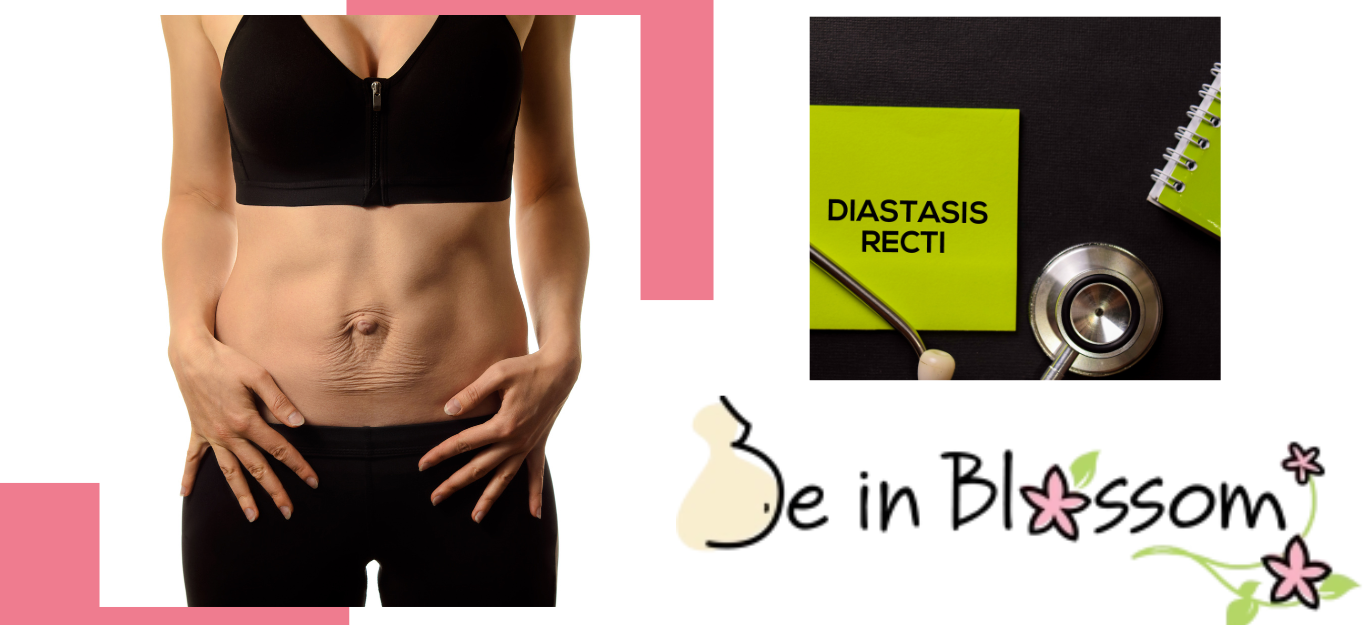
Diastasis Recti: The Separation of the Abdominals
What is abdominal separation?
During pregnancy, when your uterus grows and your abdomen expands there is a gradual broadening of the connective tissue band that joins the two sides of abdominal muscles vertically down the midline. The outermost abdominal muscles that run next to the connecting band are your rectus abdominus muscles. The separation of these muscles is known as recti diastasis, or recti divarication.
It is also known as 'DRAM' (diastasis of rectus abdominis muscle).
It is a common condition that usually improves within the first 8 weeks after giving birth.
Abdominal separation is caused by both the pressure of your growing baby and the hormonal changes that occur during pregnancy. It typically begins in the second half of pregnancy. The average separation of these muscles by the end of pregnancy is 6-7cm at the widest point at the belly button.
Some studies suggest abdominal separation is more common in women with low BMI prior to and during pregnancy, are over the age of 35, or are pregnant with twins or triplets (or more). It can also happen to a petite woman carrying a larger-than-average baby.
What are the symptoms and signs of abdominal separation?
If you have abdominal separation after giving birth, you may notice your abdomen appears pendulous or heavy. If you lie flat on your back and lift your head up, you can see the central region bulge or cone up. You may feel weak in your core and want to support your abdominal wall when you are standing.
What is the procedure for determining abdominal separation?
Your Physiotherapist can check the size of your abdominal separation using their fingers, calipers or measuring tape, or by performing an ultrasound. This is usually done in the early days following birth and then at your 6-8 week Physiotherapy follow-up. When the Physio assesses your abdominal wall they will ascertain the conditioning of your connective tissue joining the abdominal muscles, the skin integrity, abdominal size and how well you are moving. For the purpose of research women are considered to have a DRAM if the gap between the muscles is greater or equal to 2.5cm at the widest point. In practice whether a woman needs ongoing abdominal wall rehabilitation is very individual. Some women have a wider gap but quite good connective tissue and they recover well with little intervention. Others may have a smaller gap but very distended connective tissue and find it much harder to achieve resolution.
Does abdominal separation resolve on its own?
Abdominal separation resolves in 80% of women without intervention after the baby is born. There has been research comparing early postnatal abdominal exercise versus using an external support over the first 6 weeks post-birth and it seems that the best practice is to get some form of support on the abdominal wall from early on and limit abdominal exercise to gentle pelvic mobility work for the first 6 weeks.
Some women with abdominal separation experience lower back pain and/ or urinary incontinence but there is no evidence-based link for these currently.
How can abdominal separation be avoided while pregnant?
Abdominal muscle separation is a natural part of pregnancy. You can try to limit the pressure on the connective tissue and muscles through avoiding exercises that cause you to strain into the gap. Avoid sit-ups and full planks if they cause you to strain. Get your Physiotherapist to assess the abdominal exercises you are including in your training to see if you are performing them with good technique. Avoid constipation and seek medical attention if you have a cough. It is a good idea to wear a form of abdominal support in your pregnancy if you have had a significant abdominal separation with a previous pregnancy or can feel lower abdominal dragging/pressure. Ask your Physiotherapist about what support garment might be best. These can also assist with managing pelvic girdle pain.
How is abdominal separation treated after birth?
Consider the following suggestions:
- Avoiding heavy lifting in the first 6 weeks, until you have a Physiotherapy review.
- When getting out of bed or sitting up, roll onto your side.
- Wear an abdominal support from early post-birth.
- Avoid activities and movements that can excessively load the abdominal separation, such as full sit-ups, double leg lowers or full plank in the first 6 weeks. Seek advice from your Physiotherapist on progressing your abdominal exercises.
- Participate in Physiotherapy-led postnatal Pilates programs from 6 weeks.
What to Expect in a Physiotherapy Postnatal Pilates Class?
-
A focus on coordination of breathing with pelvic floor and deep abdominals.
-
Mindful connection with the abdominal wall through visualisation, verbal and hands-on cueing.
-
Exercises that improve ribcage movement to allow the abdominal muscles to work effectively.
-
Progressive loading of the abdominals both in static and dynamic patterns starting with simpler, small range movements and progressing to more complex patterns that include rotation, introduction of unstable surfaces and resistance devices.
-
Posture and pelvic floor training
Where to Look for Help
Consult your doctor, midwife, or physiotherapist if you do not feel your abdominal shape is improving or you are experiencing abdominal discomfort.
Be In Blossom are a team of trusted licensed Physiotherapists working in pelvic health in Keperra and Chermside. You can contact them via email at
or call 0488 001 105.